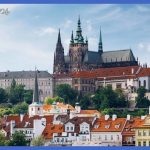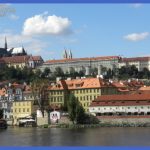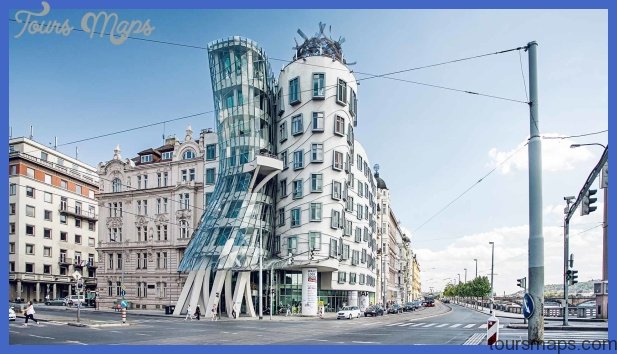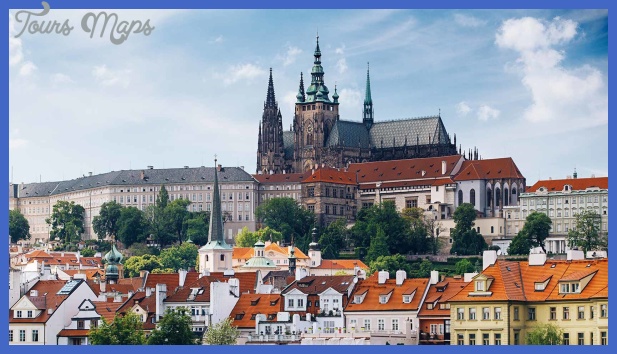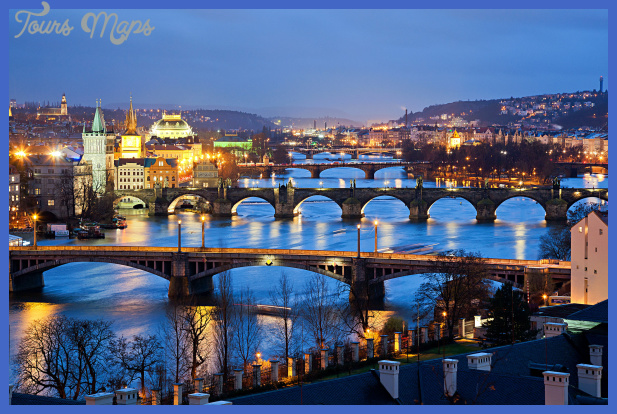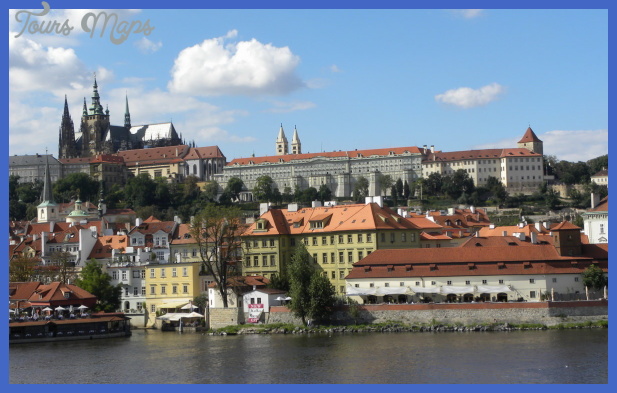Prague evolved from about 40 fortified farms, a settlement between the castles of Wyscherhrad and Hradschin. This was described by the Arabian businessman Ibrahim Ibn Jakub in the 10th century as the ‘city of stone and chalk’, and was the first written mention of Prague. From this time onwards the old town evolved and in 1357 with the building of the Charles’ Bridge it was linked with the ‘small side’ on the left bank. In 1344 the bishopric founded in 973 was raised to an archbishopric. Two years later the city became the royal residence, with the building of the new town (south of the old town on the right bank) and the university gave Prague greater importance.
The four parts of the city (Old Town, New Town, Small Side and Hradschin) were only united in 1794 under Emperor Joseph II. In Hradschin, the Castle of Prague and the Cathedral of Saint Vitus together formed the intellectual and political center for Bohemia. It was the place of the second Prague defenestration in 1618 which escalated into the Bohemian revolt and the reason for the Thirty Years War. (The first Prague defenestration in 1419 led to bloody clashes in the Hussite war). During the Thirty Years War Bohemia came under Austrian rule and won independence only after the
The population of Slovakia is over 30 percent of the population of the Czech & Slovak Fed, Republic.
Neighbouring countries are the Czech Republic, Poland, the Soviet Union, Hungary, Austria. The south is mostly lowlands, the center and north mountaineous. In Slovakia there are the following mountain ranges: the Small and the White Carpathians, the highest range is the High Tatras/Highest peak Gerlach 2655 m/the Low Tatras, the Big and the Little Tatra.
The lowest place is the river Bodrog near Streda nad Bodro-gom/94 m. The largest river is the Danube/Dunaj. The largest lake is Zemplinska Sirava. The highest average temperature is in Sturovo 10.4C, the lowest yearly average temperature Lomnicky stit -6C.
The most interesting areas for tourists are the High Tatras, Pieniny, Low Tatras, the surroundings of dam-lakes, castles, spas. The climate is continental with warm summers and temperate winters, autumn and spring are pleasant periods.
From history: The area of Slovakia was inhabited already in 3000 B.C. Documents mention the territory in the time of the Great Moravian Empire around the confluence of the Morava and Danube rivers – Devin castle. Important is the period of Earl Pribina who resided in Nitra, Historically important documents exist from the castles and life of the period of Spis castle, Irencin castle, Orava and Bratislava castles, at the latter King Andew III. granted Bratislava the privileges of a free royal town, which were later codified by the German Emperor and King of Hungary Sigismund of Luxemburg in 1436. King Mathias Corvinus founded the university in 1465, In St. Martin’s Cathedral 11 kings and 8 queens of Hungary were coronationed. In 1919 after the foundation of Czecho-Slovakia Bratislava became the capital of Slovakia. Today the city is residence of the government institutions, political and economic organisations. Here resides the
TRAVEL TO PRAGUE Photo Gallery
Maybe You Like Them Too
- The Best Cities To Visit in The World
- World’s 10 Best Places To Visit
- Coolest Countries in the World to Visit
- Travel to Santorini, Greece
- Map of Barbados – Holiday in Barbados


